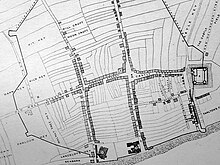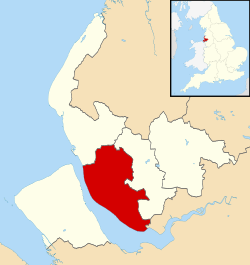Liverpool theme by Gerhard
Download: Liverpool.p3t

(3 backgrounds, custom backgrounds SD only)
Liverpool is a city and metropolitan borough in Merseyside, northwest England. It had a population of 496,770 in 2022.[3] The city is located on the eastern side of the Mersey Estuary, adjacent to the Irish Sea, and is approximately 178 miles (286 km) from London. Liverpool is the fifth largest city in the United Kingdom, the largest settlement in Merseyside and part of the Liverpool City Region, a combined authority with a population of over 1.5 million.[5]
Liverpool was established as a borough in 1207 in the county of Lancashire and became a significant town in the late seventeenth century, when the port at nearby Chester began to silt up. The Port of Liverpool became heavily involved in the Atlantic slave trade, with the first slave ship departing from the town in 1699. The port also imported much of the cotton required by the neighbouring Lancashire textile mills, and became a major departure point for English and Irish emigrants to North America. In the 19th century, Liverpool rose to global economic importance at the forefront of the Industrial Revolution and built the first intercity railway, the first non-combustible warehouse system (the Royal Albert Dock), and a pioneering elevated electrical railway; it was granted city status in 1880. In common with many British cities, the city entered a period of decline in the mid-20th century, though it experienced regeneration after its selection as the European Capital of Culture in 2008.[6][7]
Liverpool's modern economy is diversified. It has sectors such as tourism, culture, maritime, hospitality, healthcare, life sciences, advanced manufacturing, creative, and digital.[8][9][10] The city contains the second-highest number of national museums, listed buildings, and listed parks in the UK, with only London having more.[11] The city is often used as a filming location due to its architecture, and was one of the top five cities in the UK most visited by overseas tourists in 2022.[12] It is England's only UNESCO City of Music and has produced many notable musical acts, most notably the Beatles, while musicians from the city have released more UK number one hit singles than anywhere else in the world.[13] It has also produced many actors, artists, poets, and writers. In sports, the city is known as the home of Premier League football teams Everton FC and Liverpool FC. The city's port was the fourth-largest in the UK in 2023,[14] and numerous shipping and freight lines have headquarters and offices there.
Residents of Liverpool are often called "Scousers" in reference to scouse, a local stew made popular by sailors in the city, and the name is also applied to the distinct local accent. The city has a culturally and ethnically diverse population and historically attracted many immigrants, especially from Ireland, Scandinavia, and Wales. It is the home of the earliest black community in the UK, the earliest Chinese community in Europe, and the first mosque in England.[15]
Toponymy[edit]
The name comes from the Old English lifer, meaning thick or muddy water, and pōl, meaning a pool or creek, and is first recorded around 1190 as Liuerpul.[16][17] According to the Cambridge Dictionary of English Place-Names, "The original reference was to a pool or tidal creek now filled up into which two streams drained".[18] The place appearing as Leyrpole, in a legal record of 1418, may also refer to Liverpool.[19] Other origins of the name have been suggested, including "elverpool", a reference to the large number of eels in the Mersey.[20] The adjective "Liverpudlian" was first recorded in 1833.[17]
Although the Old English origin of the name Liverpool is beyond dispute, claims are sometimes made that the name Liverpool is of Welsh origin, but these are without foundation. The Welsh name for Liverpool is Lerpwl, from a former English local form Leerpool. This is a reduction of the form "Leverpool" with the loss of the intervocalic [v] (seen in other English names and words e.g. Daventry (Northamptonshire) > Danetry, never-do-well > ne’er-do-well).
In the 19th century, some Welsh publications used the name "Lle'r Pwll" ("(the) place (of) the pool"), a reinterpretation of Lerpwl, probably in the belief that "Lle'r Pwll" was the original form.
Another name, which is widely known even today, is Llynlleifiad, again a 19th-century coining. "Llyn" is pool, but "lleifiad" has no obvious meaning. G. Melville Richards (1910–1973), a pioneer of scientific toponymy in Wales, in "Place Names of North Wales",[21] does not attempt to explain it beyond noting that "lleifiad" is used as a Welsh equivalent of "Liver".
A derivative form of a learned borrowing into Welsh (*llaf) of Latin lāma (slough, bog, fen) to give "lleifiad" is possible, but unproven.
History[edit]



Early history[edit]
In the Middle Ages, Liverpool existed firstly as farmland within the West Derby Hundred[22] before growing in to a small town of farmers, fishermen and tradesmen and tactical army base for King John of England. The town was planned with its own castle, although due to outbreaks of disease and its subordinance to the nearby Roman port of Chester, the town's growth and prosperity stagnated until the late 17th and early 18th centuries. Substantial growth took place in the mid-late 18th century when the town became the most heavily involved European port in the Atlantic slave trade.[23]
King John's letters patent of 1207 announced the foundation of the borough of Liverpool (then spelt as Liuerpul). There is no evidence that the place had previously been a centre of any trade. The creation of the borough was probably due to King John deciding it would be a convenient place to embark men and supplies for his Irish campaigns, in particular John's Irish campaign of 1209.[24][25] The original street plan of Liverpool is said to have been designed by King John near the same time it was granted a royal charter, making it a borough. The original seven streets were laid out in the shape of a double cross: Bank Street (now Water Street), Castle Street, Chapel Street, Dale Street, Juggler Street (now High Street), Moor Street (now Tithebarn Street) and Whiteacre Street (now Old Hall Street).[25] Liverpool Castle was built before 1235, it survived until it was demolished in the 1720s.[26] By the middle of the 16th century, the population was still around 600, although this was likely to have fallen from an earlier peak of 1000 people due to slow trade and the effects of the plague.[27][28][29]
In the 17th century, there was slow progress in trade and population growth. Battles for control of the town were waged during the English Civil War, including a brief siege in 1644.[30] In 1699, the same year as its first recorded slave ship, Liverpool Merchant, set sail for Africa,[31] Liverpool was made a parish by Act of Parliament. But arguably, the legislation of 1695 that reformed the Liverpool council was of more significance to its subsequent development.[32] Since Roman times, the nearby city of Chester on the River Dee had been the region's principal port on the Irish Sea. However, as the Dee began to silt up, maritime trade from Chester became increasingly difficult and shifted towards Liverpool on the neighbouring River Mersey. The first of the Liverpool docks was constructed in 1715, and the system of docks gradually grew into a large interconnected system.[33]
As trade from the West Indies, including sugar, surpassed that of Ireland and Europe, and as the River Dee continued to silt up, Liverpool began to grow with increasing rapidity. The first commercial wet dock was built in Liverpool in 1715.[34][35] Substantial profits from the slave trade and tobacco helped the town to prosper and rapidly grow, although several prominent local men, including William Rathbone, William Roscoe and Edward Rushton, were at the forefront of the local abolitionist movement.[36]
19th century[edit]


The 19th century saw Liverpool rise to global economic importance. Pioneering, world first, technology and civic facilities launched in the city to serve the accelerating population which was fuelled by an influx of ethnic and religious communities from all around the world.
By the start of the 19th century, a large volume of trade was passing through Liverpool, and the construction of major buildings reflected this wealth. In 1830, Liverpool and Manchester became the first cities to have an intercity rail link, through the










